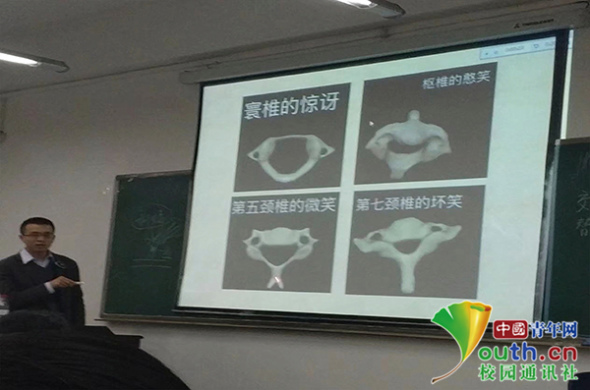
Teacher Huang Chao shows four pictures that show the neck bone's structure through emojis. Clockwise from top left, they are: the surprise of atlas, the simper of axis, the smile of the fifth cervical vertebra and the smirk of the seventh cervical vertebra. (Photo by He Wentao / Provided to youth.cn)
Are you still using the emoji "Face with Tears of Joy"? Then you might be interested in a set of smartphone stickers that make fun expressions with your neck bone.
The real shapes of our neck bones make our cervical vertebrae look like they are making various funny expressions.
The four expressions are called "the surprise of atlas", "the simper of axis", "the smile of the fifth cervical vertebra" and "the smirk of the seventh cervical vertebra".
A picture showing those creative emoji-like pictures was put online by He Wentao, a student from Sichuan Agricultural University.
He took the picture during an animal anatomy course called "Zootomy and Histoembryology", a course of 180 students lectured by Huang Chao.
When asked why he used such pictures in the class, Huang said these pictures were collected from the internet to make the course easier to understand.
To help students understand, Huang collected images and examples online in a bid to connect the course with everyday life.
"It's hard to memorize thousands of terms, so I try to use examples from daily life to make my students more interested," Huang said.
Given that most current students live in cities and are seldom directly exposed to animals, Huang often uses humans as examples.
"Humans are also mammals, and they and animals are alike in many ways. Though the shapes of their cervical vertebrae are different, the numbers are the same, seven," he explained. That's why he used human cervical vertebra expressions to explain the cervical vertebrae of mammals.


















































